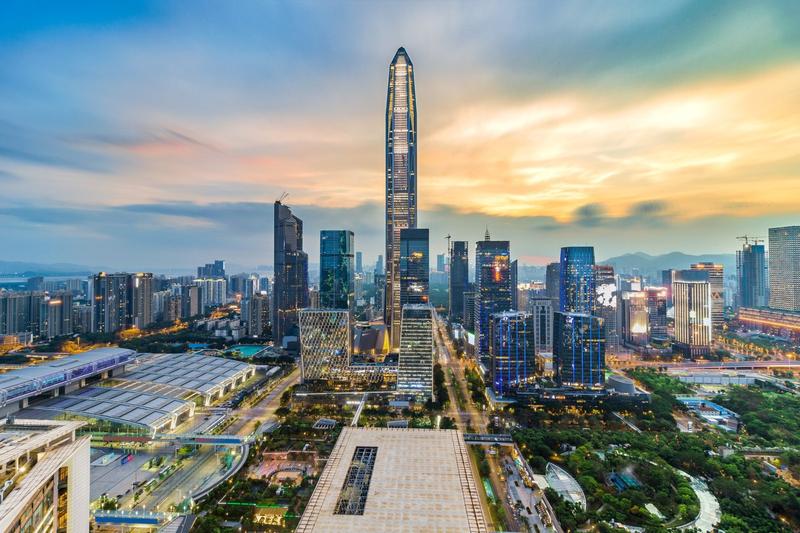 Skyscrapers border the lush green landscaping in Shenzhen's central business district. (PHOTO PROVIDED TO CHINADAILY.COM.CN)
Skyscrapers border the lush green landscaping in Shenzhen's central business district. (PHOTO PROVIDED TO CHINADAILY.COM.CN)
Shenzhen, Guangdong province, on Monday became the first Chinese city to realize full-scale 5G network deployment, likely the largest metropolitan area worldwide to achieve such a feat.
My doctor was excited by the news. To build smart hospitals, the first task is to exchange information through 5G to provide healthcare professionals the timeliest information in the fight against COVID-19, he said.
The city's official system for the mobile application of public services, or i-Shenzhen, allows people to handle more than 95 percent of administrative matters
The smart city is a high-tech concept. It is hard for ordinary people to accurately define such a novel idea. Shenzhen is one such example of a smart city.
You can palpably feel the pulse of the metropolis in its pursuit to become a smart city.
For instance, the wide application of the internet of things in the city's traffic system means traffic lights can change signals according to traffic flow to make the best use of time and volume to make traffic jams as rare as possible.
If you are a frequent flyer, you can pass security checks by "face swiping" at Shenzhen Baoan International Airport without fumbling through your pocket for IDs, thus saving considerable time and effort.
The city's official system for the mobile application of public services, or i-Shenzhen, allows people to handle more than 95 percent of administrative matters, such as applying for social security insurance, purchasing plane tickets and settling traffic tickets.
To help fight the novel coronavirus pandemic, Shenzhen launched health codes as part of digital health certifications on Feb 7, making it the first city to take such a move. The health codes have proved to be an effective means to contain the contagion and the practice is now widespread across China.
In the drive to become a smart city, the local government believes in the principle that using data to facilitate residents' lives greatly saves time and trouble.
ALSO READ: Shenzhen leads peers in 5G stand-alone deployment
To date, Shenzhen has established a unified government information resource database, possessing 30 billion pieces of data. With a platform for sharing and exchanging government information resources between different municipal sectors, an average of 19.67 million pieces of data are exchanged every day. The peak daily exchange volume of data has reached 80 million.
Over the past four decades, a trailblazing spirit prioritizing efficiency, innovation and perseverance has taken root in the hearts of the people, and "Shenzhen speed" has become synonymous with hard-core entrepreneurship in the country.
A number of Chinese high-tech firms have laid their roots in the region, and some have become leaders in their respective fields, including telecom giant Huawei and internet behemoth Tencent, along with Ping An Insurance.
To better serve the business community, Shenzhen has left no stones unturned to improve its commercial operations environment amid the task of building a smart city. Startups can finish their registrations in one day. The filing of investment projects for enterprises used to take two workdays and now has been shortened to just six seconds.
READ MORE: China leads peers in 5G investments
Being a key hub in the global electronic information technology industry, Shenzhen has consistently taken the construction of a smart city as an important driving force to promote industrial transformation and upgrading, improving city management and giving full play to new technology.


